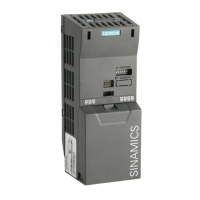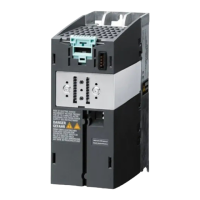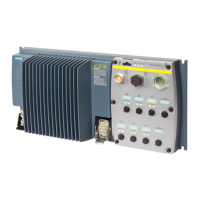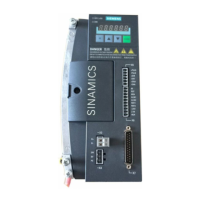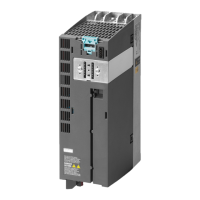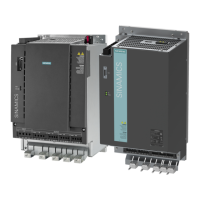Electrical installation
4.7 Power connections
Inverter chassis units
Operating Instructions, 07/2016, A5E00331449A
61
Direction of motor rotation
EN 60034-7 defines the two ends of an electric motor as follows:
● DE (Drive End): usually the drive end of the motor
● NDE (Non-Drive End): usually the non-drive end of the motor
An electric motor will rotate clockwise if the shaft is turning clockwise when looking at the DE
side.
For electric motors with 2 shaft ends, the direction of rotation must be determined based on
the shaft end specified as the drive end.
For clockwise rotation, the electric motor must be connected according to the following table.
Table 4- 4 Power Module and motor connection terminals
Power Module (connection terminals)
Motor (connection terminals)
V2/T2 V
In contrast to the connection for the clockwise phase sequence, two phases have to be
reversed with a counter-clockwise phase sequence (looking at the drive shaft).
Note
Information on the phase sequence
If an incorrect phase sequence was connected when the mot
or was connected, p1821
(phase sequence direction reversal) can be used to correct the incorrect phase sequence
without physically changing it over (see "Functions, monitoring and protective
functions/direction reversal").
With motors that can be star
-connected or delta-connected, it must be ensured that the
windings are interconnected consistent with the operating voltage indicated on the rating
plate or in the motor documentation. Make sure that the winding insulation of the connected
motor has sufficient
insulation strength to meet the requirements for converter operation.
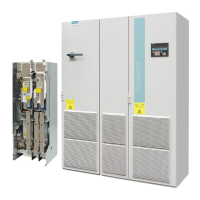
